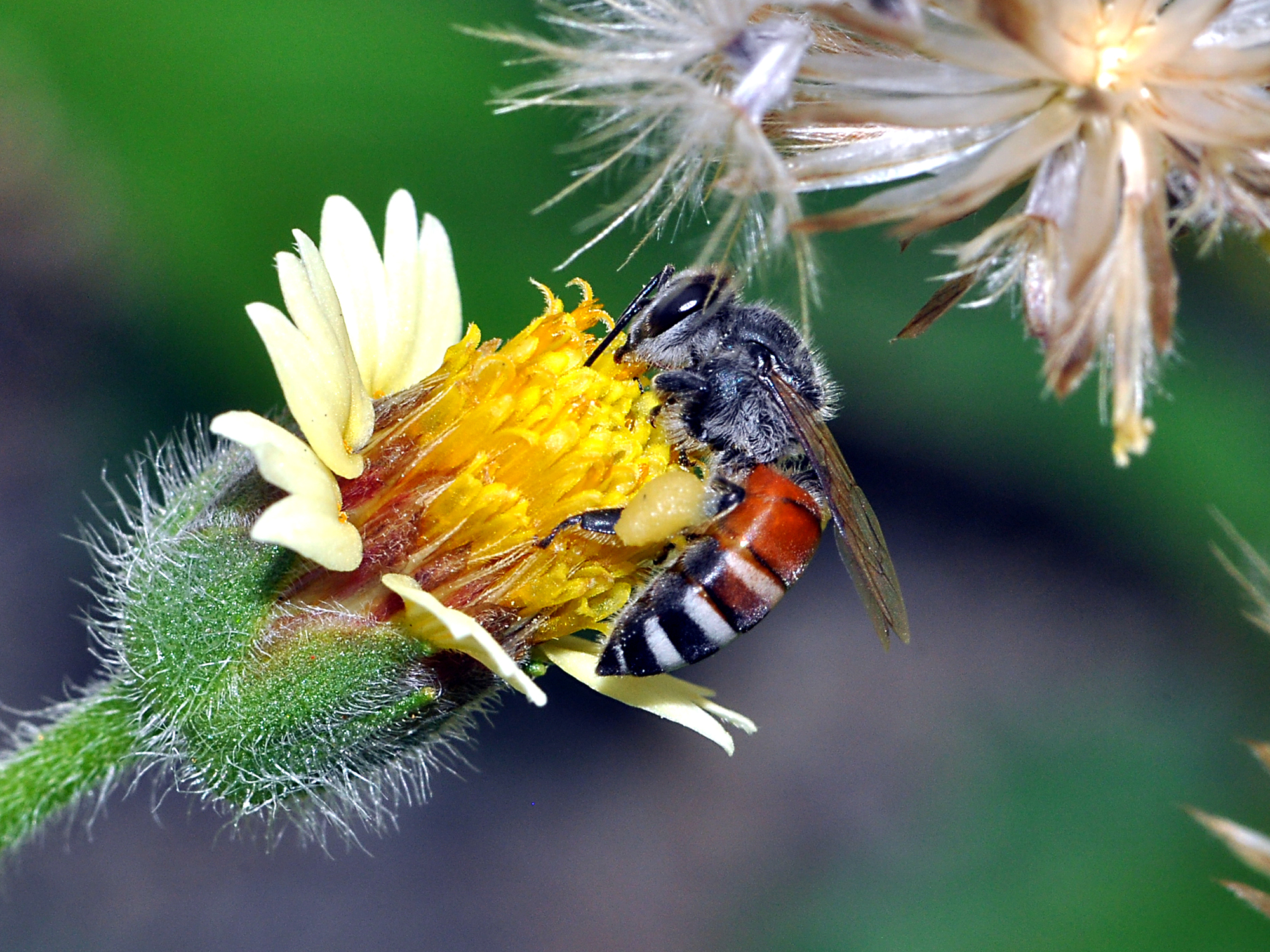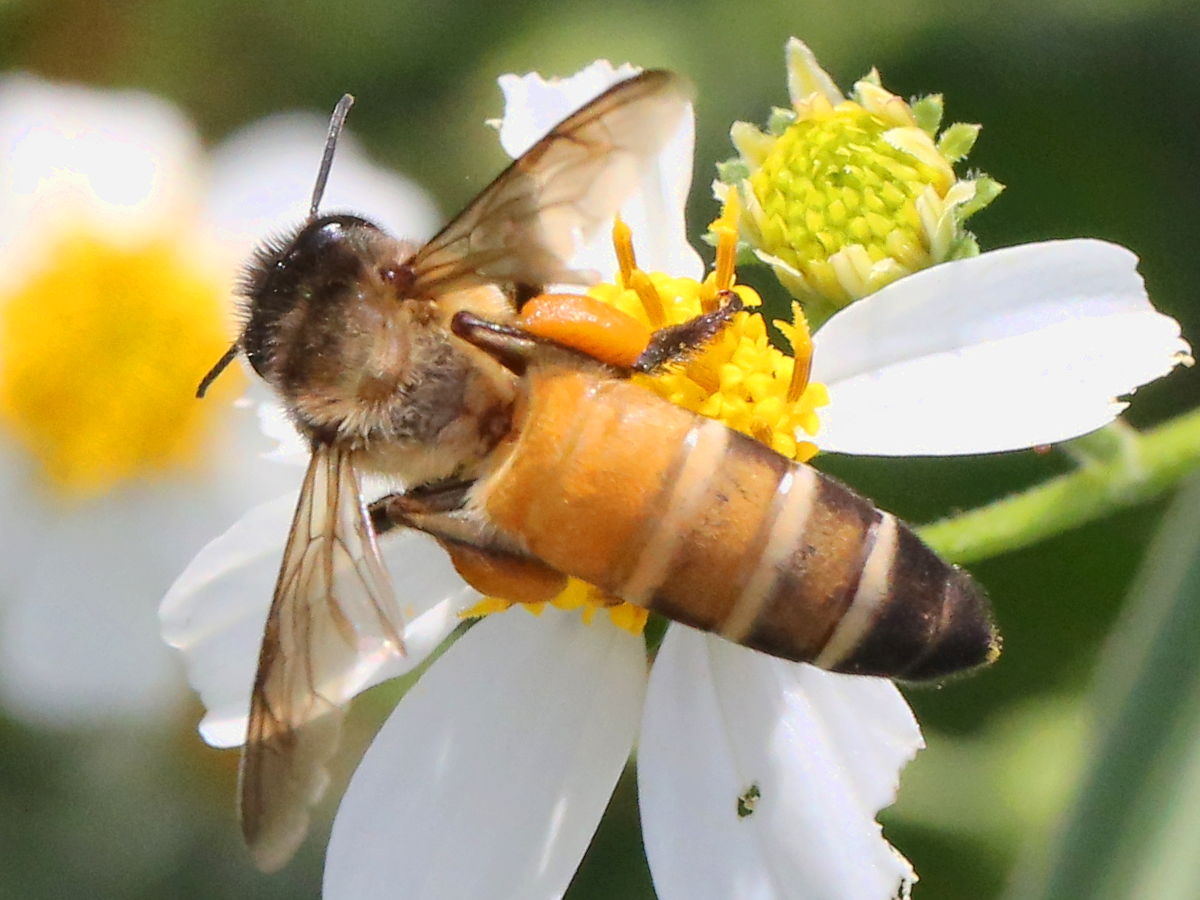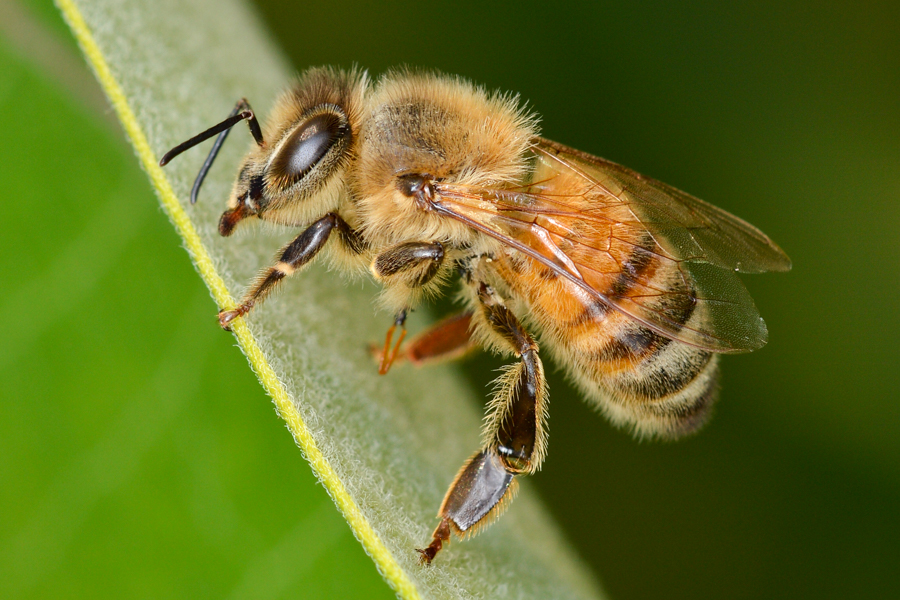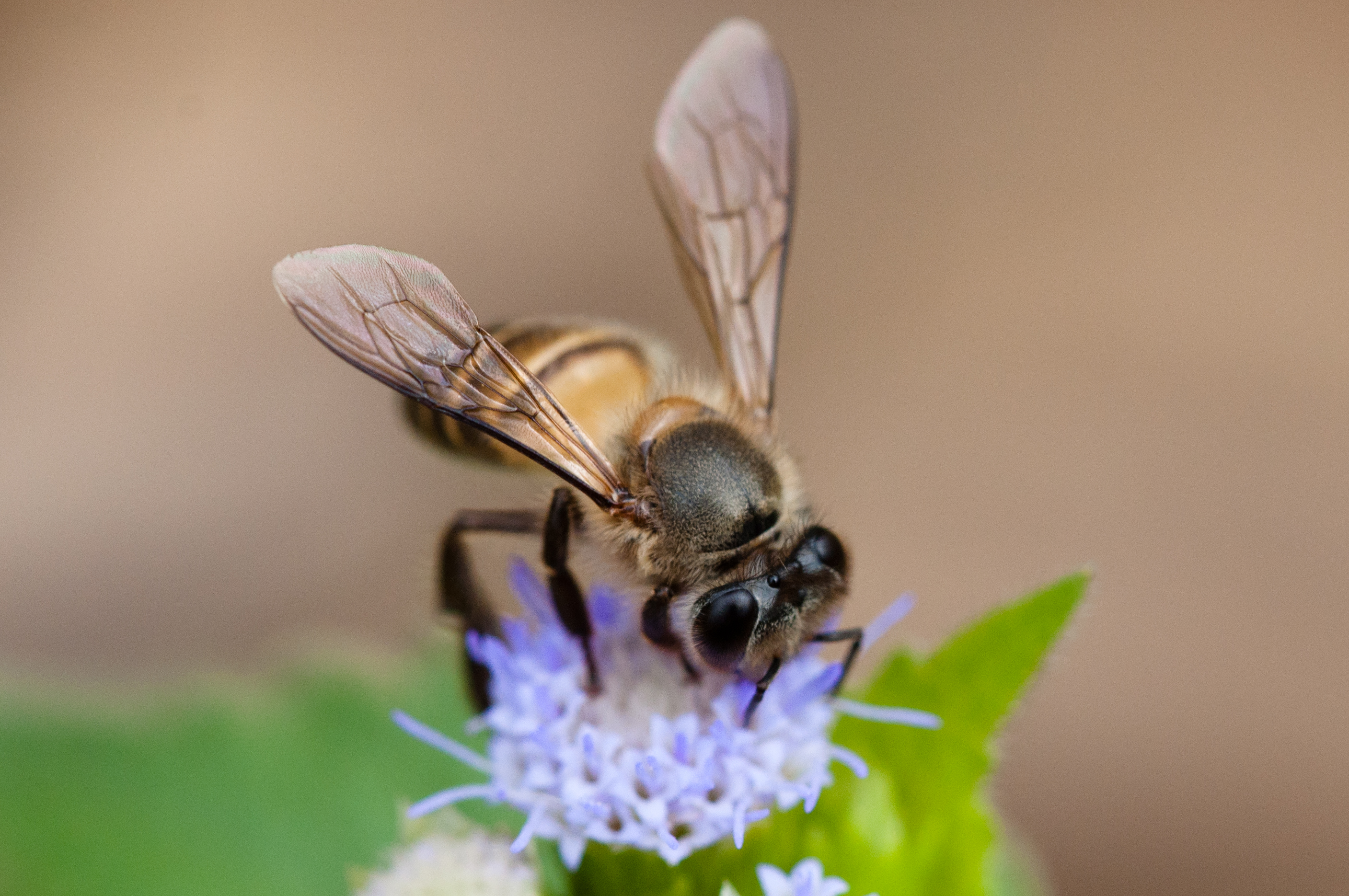Honey bees are fascinating creatures that play a crucial role in pollinating crops and producing honey. There are eight types of honey bees, each with unique characteristics and traits.
In this article, we will explore the different types of honey bees and how to identify each one. We will also discuss the importance of honey bees and their role in our ecosystem.
You are reading: 8 Types Of Honey Bees And How To Identify Each
Whether you are a beekeeper or simply interested in learning more about these amazing insects, this article will provide you with valuable insights into the world of honey bees.

8 Types Of Honey Bees And How To Identify Each
Apis florea
Apis florea, commonly known as the red dwarf honey bee, is one of two species of small, wild honey bees found in southern and southeastern Asia. It is the most common of the dwarf honey bees and is naturally distributed from the Indian subcontinent throughout Southeast Asia.
Apis florea is among the smallest honey bees, with a body length of 7-10 mm and a forewing length close to 6.8 mm. This species is a member of the Apis genus and is native to southeast Asia, making it one of the most phylogenetically basal bees.
Apis florea and its sister species, Apis andreniformis, together comprise the subgenus Micrapis and are the most primitive of the living species of Apis, reflected in their small colony size and simple nest construction.
The exposed single combs of Apis florea are built on branches of shrubs and small trees, and the forager bees do not perform a gravity-oriented waggle dance on the vertical face of the comb to recruit nestmates as in the domesticated Apis mellifera and other species.
Apis florea is commonly found in southeastern Asian countries, especially in Thailand, Iran, Oman, United Arab Emirates, India, Myanmar, and some parts of China, Cambodia, and Vietnam. They live in forest habitats but are also pollinators of tropical fruit crops in Thailand.
Apis andreniformis
Apis andreniformis, also known as the black dwarf honey bee, is a relatively rare species of honey bee that is native to the tropical and subtropical regions of Southeast Asia. It is the smallest and darkest honey bee species, with a body length of approximately 6.5 to 10 mm.
A. andreniformis was originally thought to be a part of the species Apis florea, but recent studies have highlighted morphological differences that have separated the two into distinct species.
A. andreniformis is most closely related to Apis florea, its sister species, with which it is commonly seen in sympatric distribution throughout southeast Asia.
Read more : 9 Types Of Yellow Fish With Pictures And Identification Guide
This species can be distinguished from other Apis species by its dark black coloration, making it the darkest of its genus. The black dwarf honey bee is widely distributed in tropical Southeast Asia, as well as parts of Nepal, India, Sri Lanka, and China.
Apis dorsata

Apis dorsata, also known as the rock bee or giant honey bee, is a species of honey bee found in South and Southeast Asia. Here are some key facts about Apis dorsata:
– Apis dorsata is typically around 17-20 mm long.
– Nests are mainly built in exposed places far off the ground, like on tree limbs, under cliff overhangs, and urban buildings.
– Each colony consists of a single vertical comb made of workers’ wax suspended from above, and the comb is typically covered by a dense mass of bees in several layers.
– The nests vary in size, reaching up to 1 meter.
– Each cell within the comb is hexagonal in shape, and the same size and type of cells are used to rear larvae.
– Apis dorsata store their honey in an upper corner of the nest.
– Apis dorsata is found from the Indian subcontinent to Southeast Asia, with the greatest populations found in China, Malaysia, Indonesia, India, Pakistan, and Sri Lanka.
– Apis dorsata is among the largest species of bees, with a forewing length of 12-15 mm.
– Apis dorsata is an important pollinator of crops and non-cultivated angiosperms.
Similar to other honeybees, Apis dorsata is regularly afflicted by parasitic mites, with the parasitic mite associated with Apis dorsata being Tropilaelaps clareae.
Due to deforestation and people’s “mindsets” towards the bees, populations of Apis dorsata in the Philippines have become relatively rare. Apis dorsata has been described as one of the most dangerous animals of the southeastern Asian jungles due to their threatening defensive behavior.
Apis laboriosa
Apis laboriosa, also known as the Himalayan giant honey bee or cliff honey bee, is the world’s largest honey bee species. Here are some key facts about Apis laboriosa:
Physical Characteristics:
– Single adults can measure up to 3.0 cm (1.2 in) in length.
– It is the largest extant honey bee species in the world, with a body length slightly larger than Apis dorsata.
– Apis laboriosa workers have a wingspan of 3.0-3.5 cm.
Behavior:
– Apis laboriosa has different housekeeping and swarming behavior than Apis dorsata, allowing it to survive at high altitudes.
– Little gene flow has occurred between Apis dorsata and Apis laboriosa for millions of years.
– Apis laboriosa is the only bee to produce honey at high altitudes, as hive bees are not kept at such high altitudes.
Distribution:
– Apis laboriosa is found in the Himalayan region, including Nepal, Bhutan, India, and China.
– This species is one of the important pollinators at higher altitudes of the Himalayas.
Honey:
– There are three types of Apis laboriosa honey: spring or red honey that is created from flowers at higher altitudes, spring honey created from flowers at mid and lower altitudes, and autumn honey is created from any site.
– Red honey has an intoxicating effect and various relaxing qualities that decrease over storage.
– It is not consumed locally as it is valuable, and honey hunters prefer to sell it at a high price.
Overall, Apis laboriosa is an important species of honey bee that plays a crucial role in pollinating crops and producing honey in the Himalayan region.
Apis mellifera

Worker
Apis mellifera, also known as the western honey bee or European honey bee, is the most common of the 7-12 species of honey bees worldwide. Here are some key facts about Apis mellifera:
Physical Characteristics:
– Apis mellifera is typically around 1.2 cm (0.5 in) long, although size varies among the several strains of this species.
– The head and thorax, or midsection, are somewhat bristly and vary in color according to the strain.
– Two large compound eyes and three simple eyes, or ocelli, are located on top of the head.
Behavior:
– Apis mellifera is a eusocial insect, and colony members perform various complex communications and divisions of labor to maintain colony.
– The queen is the only fertile female in the colony and lays eggs nearly continuously throughout the year.
– Workers forage for food (nectar and pollen) for the entire colony.
Distribution:
– Apis mellifera is native to Europe, western Asia, and Africa.
– Human introduction of Apis mellifera to other continents started in the 17th century, and now they are found all around the world.
– There are currently 26 recognized subspecies of Apis mellifera, with differences based on differences in morphology and molecular characteristics.
Honey:
– Apis mellifera is known for its production of honey, which is stored, concentrated nectar.
– Honey is created by bees regurgitating and evaporating the nectar.
– Apis mellifera is an important pollinator of crops and non-cultivated angiosperms.
Overall, Apis mellifera is an important species of honey bee that plays a crucial role in pollinating crops and producing honey worldwide.
Apis cerana

Apis cerana, also known as the eastern honey bee, Asiatic honey bee, or Asian honey bee, is a species of honey bee native to South, Southeast, and East Asia. Here are some key facts about Apis cerana:
Physical Characteristics:
– Apis cerana individuals are very similar in physical characteristics to other species in the genus Apis.
– Adult Apis cerana are black in color, with four yellow abdominal stripes.
– There are also distinctions between worker bees, queens, and drones.
– The individuals in this genus are defined by long, erect hairs that cover the compound eyes and assist in pollen collection, strongly convex scutellum, and a jugal lobe in the hindwing.
Behavior:
– Apis cerana is known for its highly social behavior, reflective of its classification as a type of honey bee.
– Apis cerana colonies are known for building nests consisting of multiple combs in cavities containing a small entrance, presumably for defense against invasion by individuals of another nest.
– The diet of this honey bee species consists mostly of pollen and nectar, or honey.
Distribution:
– Apis cerana encompass a wide range of climatic zones including moist tropical rainforests, wet-dry tropical savannas, mid-latitude steppes, dry mid-latitude grasslands, moist continental deciduous forests, and taigas.
– The natural range of Apis cerana extends from Primorsky Krai in Russia in the north, to eastern Indonesia in the south; and to Japan in the east, to as far as the highlands of Afghanistan in the west.
Importance:
– Apis cerana is an important bee to beekeepers in Asia, especially in poor communities.
– There are initiatives to teach beekeeping as a long-term employment.
– Apis cerana has divergent biological traits compared to Apis mellifera and it has played a key role in maintaining biodiversity in eastern and southern Asia.
– Apis cerana is the primary host of the parasitic mites Varroa jacobsoni and V. destructor.
Overall, Apis cerana is an important species of honey bee that plays a crucial role in pollinating crops and producing honey in Asia.
Apis koshevnicovi
Read more : Are Lizards Poisonous And 3 Types Of Venomous Lizards
Apis koschevnikovi, also known as Koschevnikov’s honey bee, is a species of honey bee that inhabits Malaysian and Indonesian Borneo. Here are some key facts about Apis koschevnikovi:
Physical Characteristics:
– Apis koschevnikovi is larger than its sympatric species, Apis cerana, consistently being 10 to 15% larger linearly.
– The drones of Apis koschevnikovi have a secondary sex characteristic of a hairy fringe on the margin of the tibia of the hind leg.
– Worker bee forewing venation shows a cubital index which is large and varied.
– Apis koschevnikovi is somewhat distinctive due to its reddish metasoma and legs.
Behavior:
– Apis koschevnikovi has a very small colony size of a thousand bees or so, which allows them to survive in a rainforest habitat.
– Despite their small colony size, they are still able to harvest resources very quickly and reproduce at a fast pace during the general flowering period.
Distribution:
– Apis koschevnikovi is found in Malaysian and Indonesian Borneo.
– This species lives sympatrically with other honey bee species such as Apis cerana (specifically A. c. nuluensis).
Importance:
– Apis koschevnikovi is a honey bee nectar-feeder and a steady resident component of the rainforest.
– Apis koschevnikovi visits flowers during the entire year and is one of the only honeybees that appear frequently at flowering canopy trees or at baits in Bornean primary forests.
Overall, Apis koschevnikovi is an important species of honey bee that plays a crucial role in pollinating crops and producing honey in Malaysian and Indonesian Borneo.
Apis nigrocincta
Apis nigrocincta, also known as the black-banded honey bee or Sulawesian honey bee, is a species of honey bee that inhabits the Philippine island of Mindanao as well as the Indonesian islands of Sangihe and Sulawesi. Here are some key facts about Apis nigrocincta:
Physical Characteristics:
– Apis nigrocincta is a medium-sized species of the tribe Apini, compared to the larger Apis dorsata or smaller Apis florea.
– The species is known for its black and yellow striped abdomen.
Behavior:
– Apis nigrocincta is a cavity-nesting species, and colonies are “permanent” and new colonies are formed by fission.
– Multiple combs are found in dark cavities such as hollows of trunks of live or dead trees, underneath roofs, water jars, and caves.
Distribution:
– Apis nigrocincta is found in the Philippine island of Mindanao as well as the Indonesian islands of Sangihe and Sulawesi.
Importance:
– Apis nigrocincta is an important pollinator of crops and non-cultivated angiosperms.
Overall, Apis nigrocincta is an important species of honey bee that plays a crucial role in pollinating crops and producing honey in the Philippines and Indonesia.
FAQS
1. What are the 8 types of honey bees?
The 8 types of honey bees are: Red Dwarf Honey Bee, Giant Honey Bee, Cavity Nesting Asian Honey Bee, Himalayan Giant Honey Bee, Koschevnikov’s Honey Bee, Black Dwarf Honey Bee, European Dark Bee, and Italian Honey Bee.
2. How can I identify honey bees?
Honey bees can be identified by their barrel-shaped body and short, fuzzy hair. They don’t have a thin middle section between their thorax and abdomen like other insects. Honey bees also have a distinctive black and yellow striped abdomen.
3. What is the largest honey bee species?
The Himalayan giant honey bee (Apis laboriosa) is the largest honey bee species.
4. What is the smallest honey bee species?
The red dwarf honey bee (Apis florea) is the smallest honey bee species.
5. Where are honey bees found?
Honey bees are found all around the world, but they are native to Europe, western Asia, and Africa. Different species of honey bees are found in different regions, such as Apis cerana in Asia and Apis dorsata in South and Southeast Asia.
6. What is the importance of honey bees?
Honey bees play a crucial role in pollinating crops and producing honey. They are responsible for pollinating many of the fruits, vegetables, and nuts that we eat. Honey bees also produce honey, which is a valuable food source for humans and other animals.
7. How can I help honey bees?
You can help honey bees by planting bee-friendly flowers and avoiding the use of pesticides in your garden. You can also support local beekeepers by buying their honey and beeswax products.
Source: https://petstutorial.com
Category: Animals










